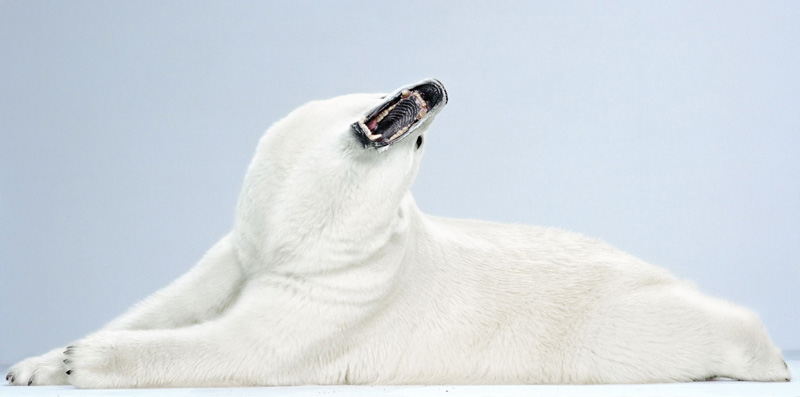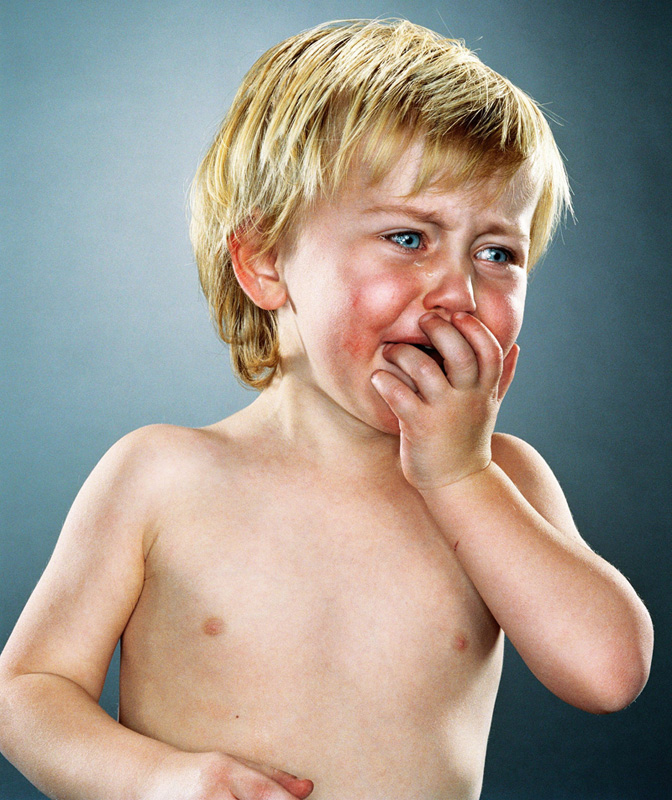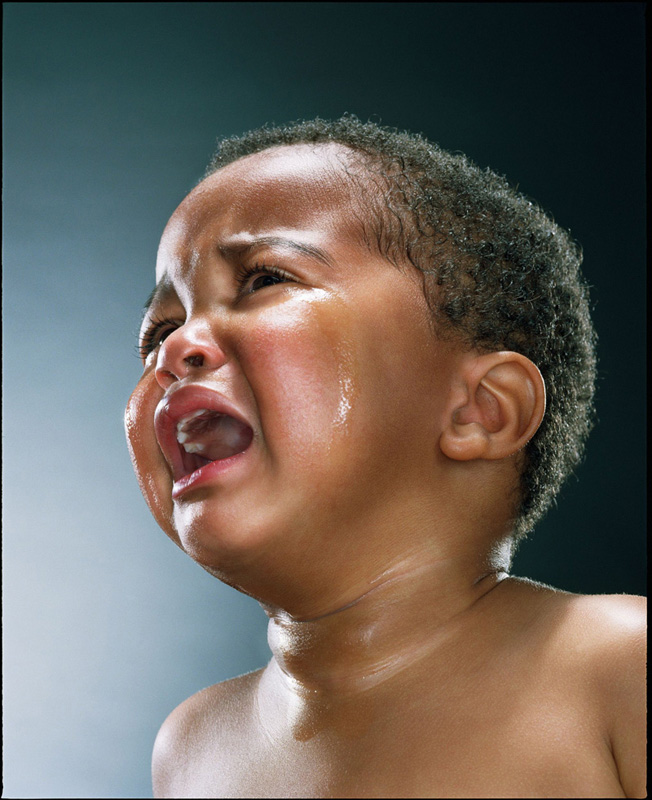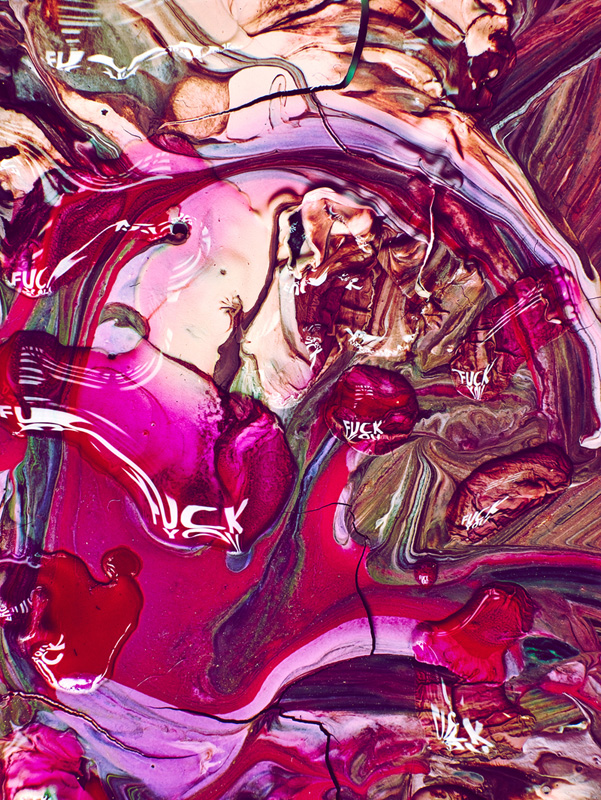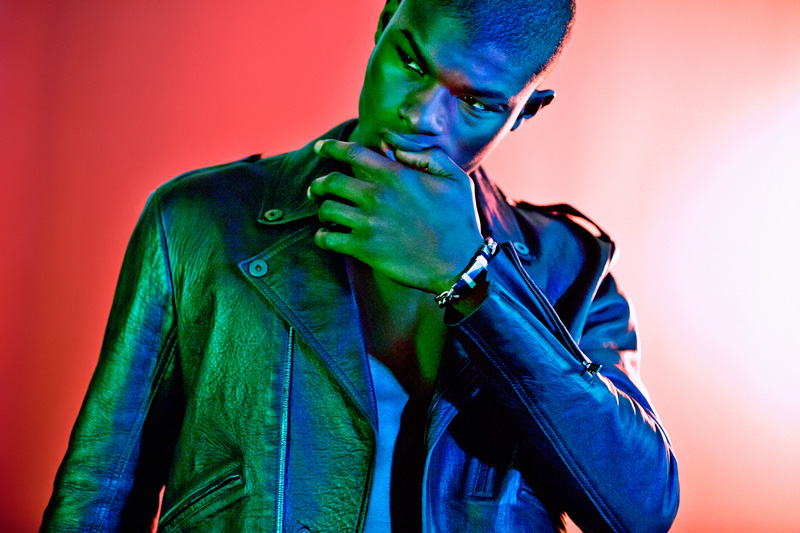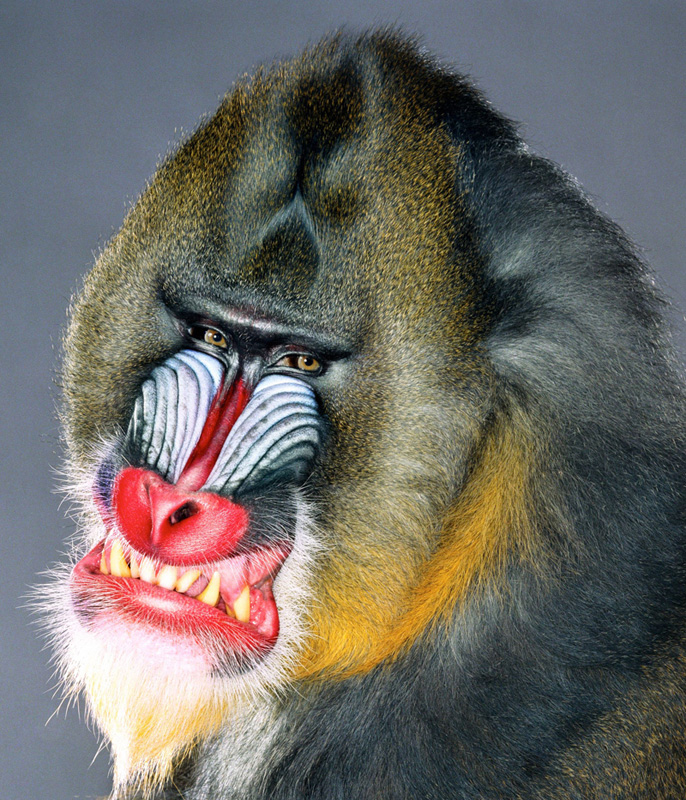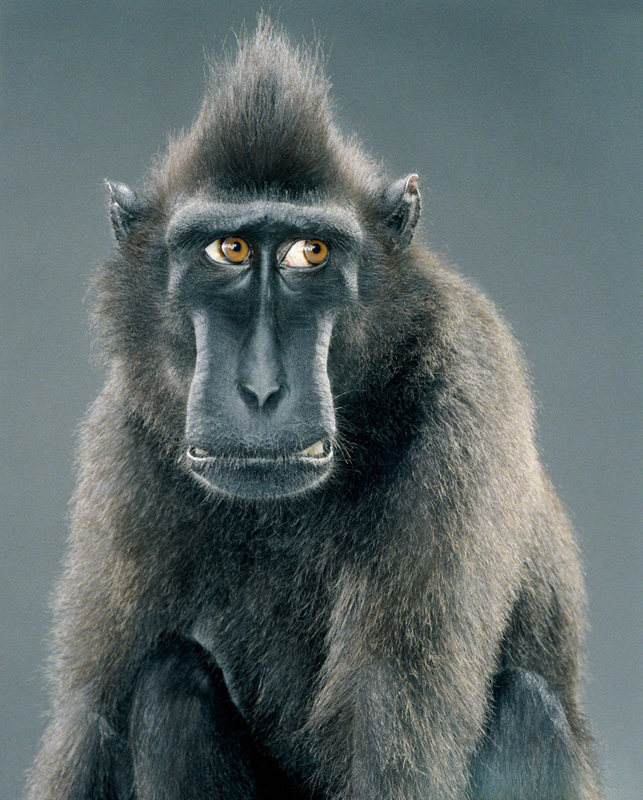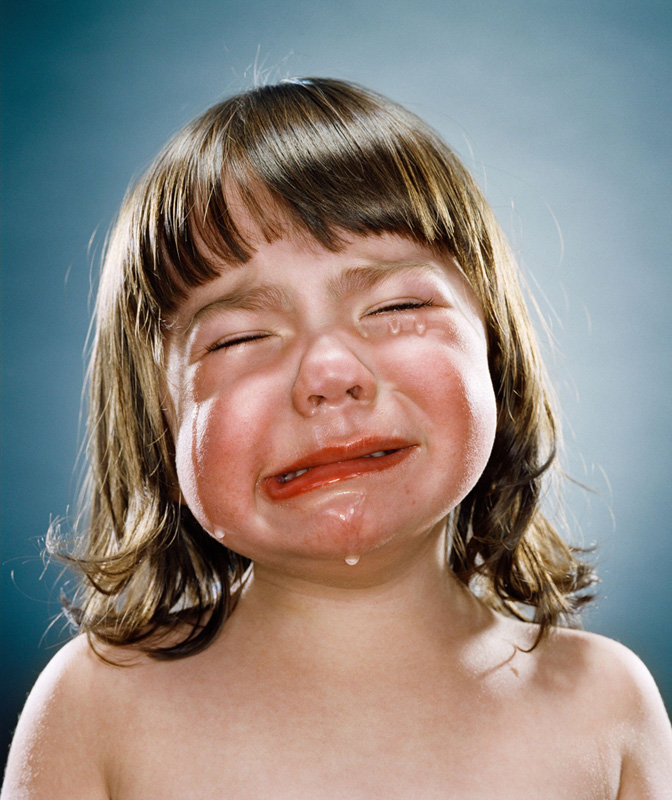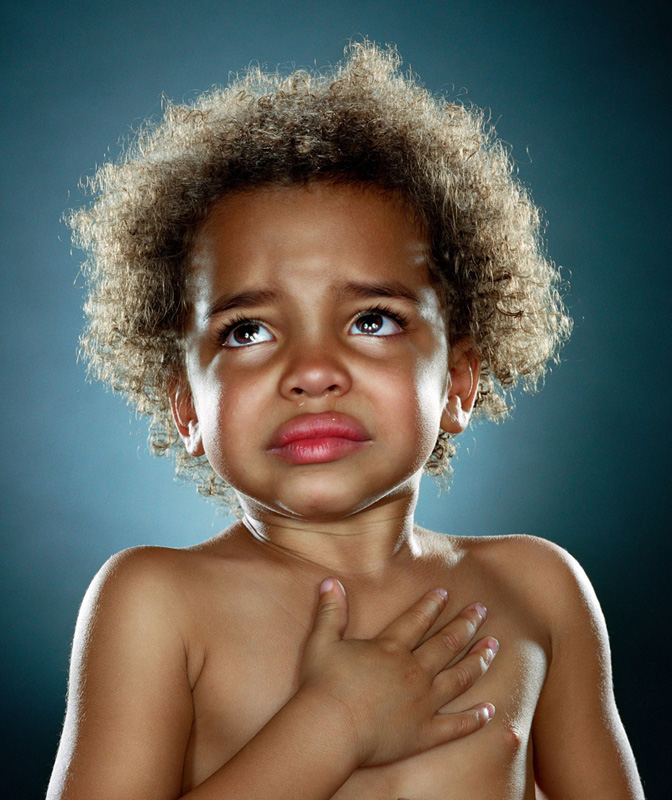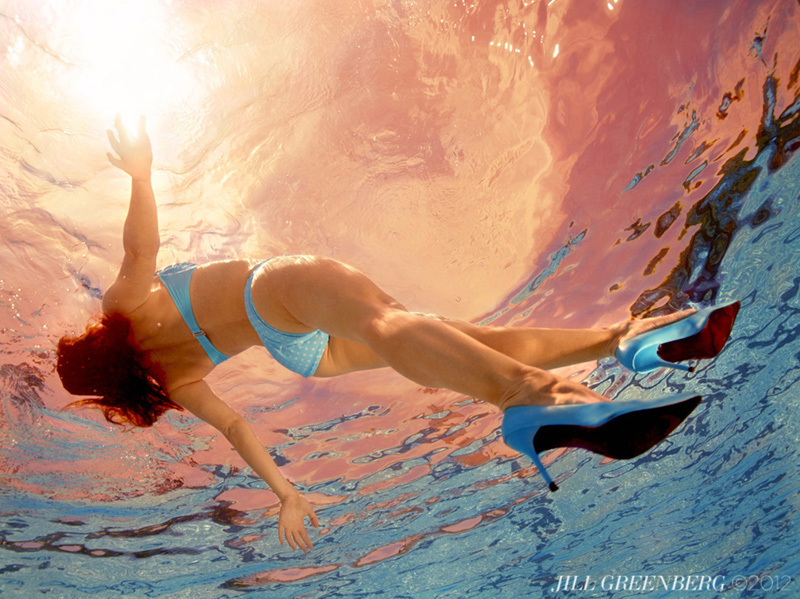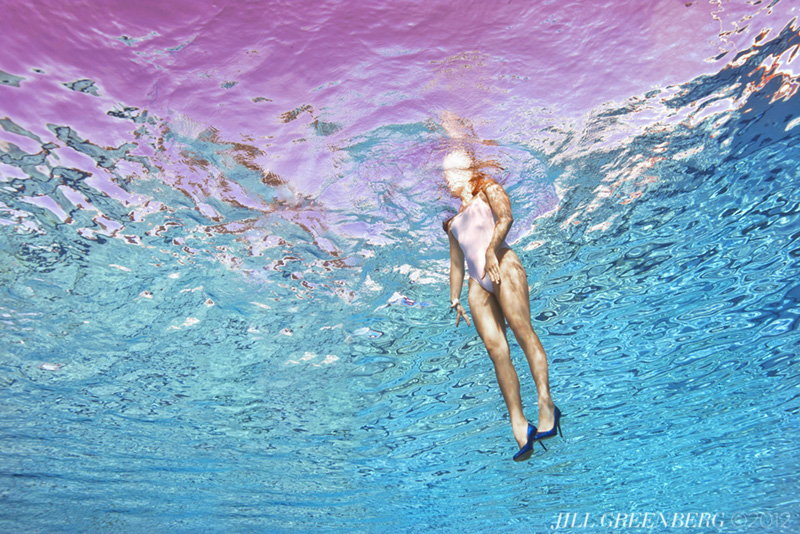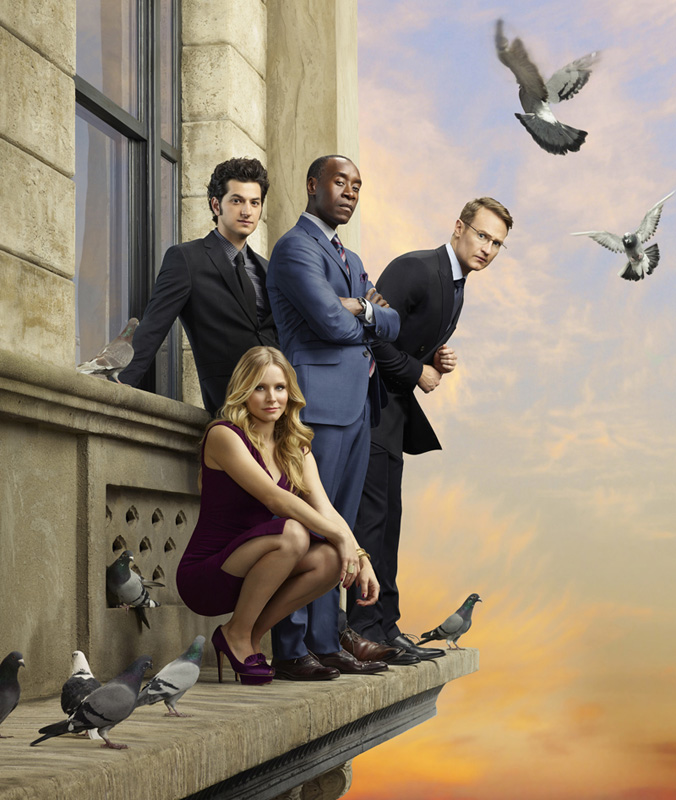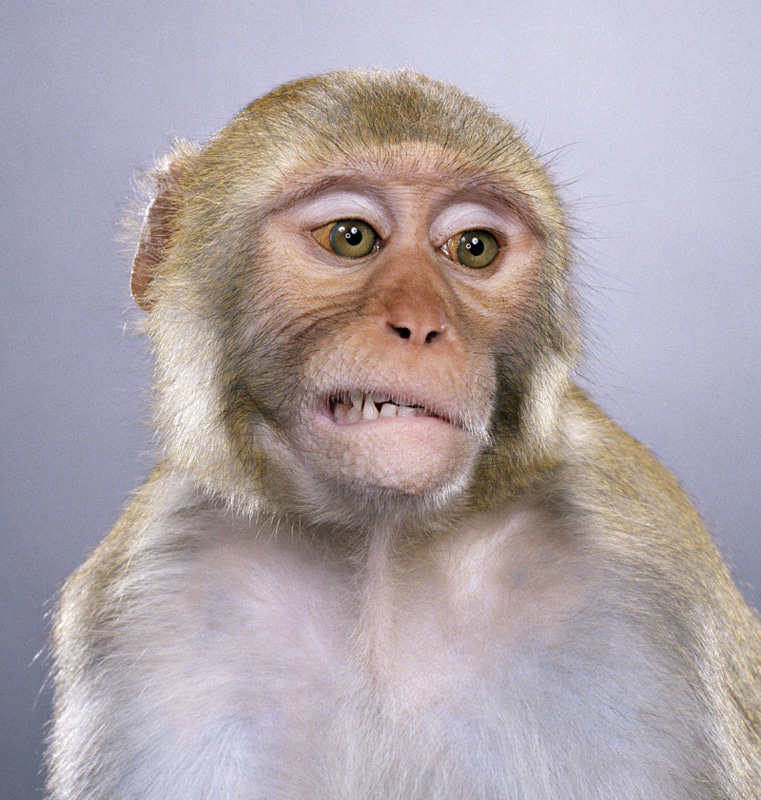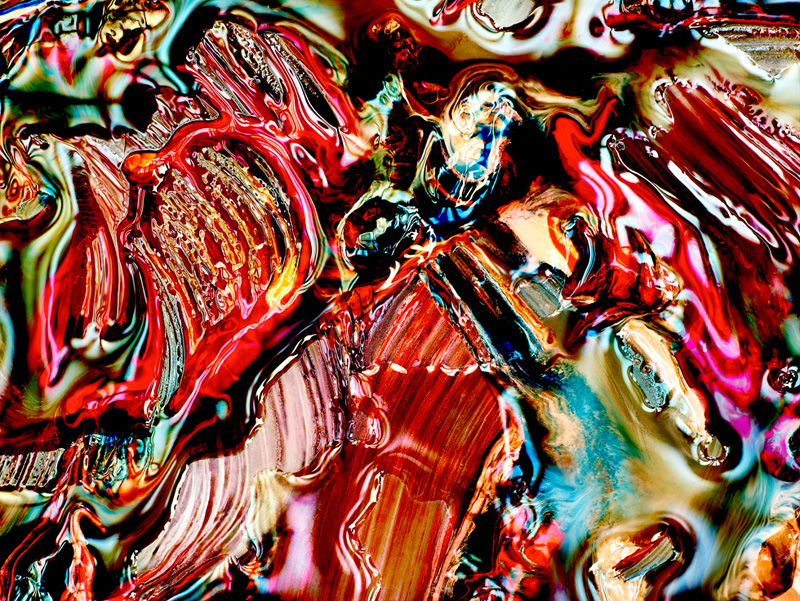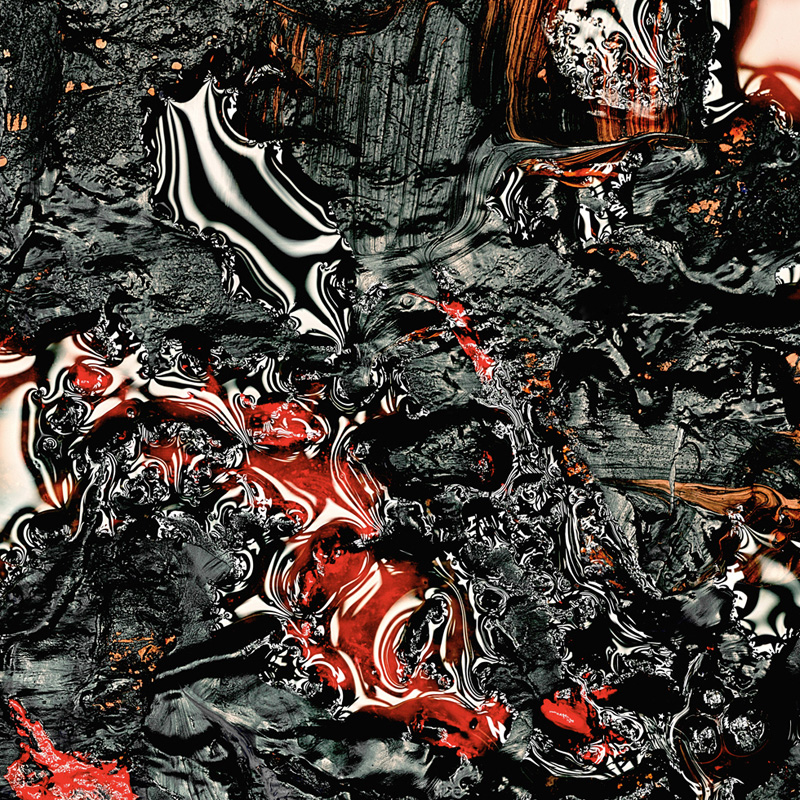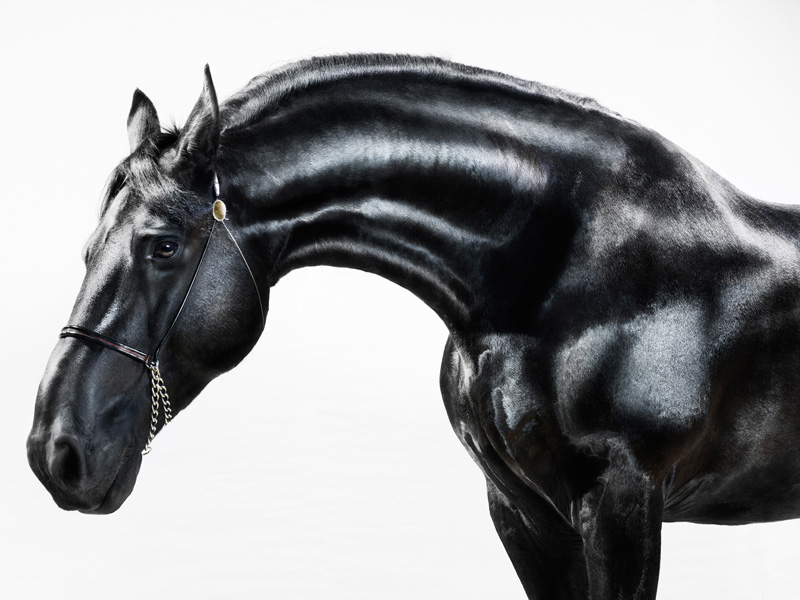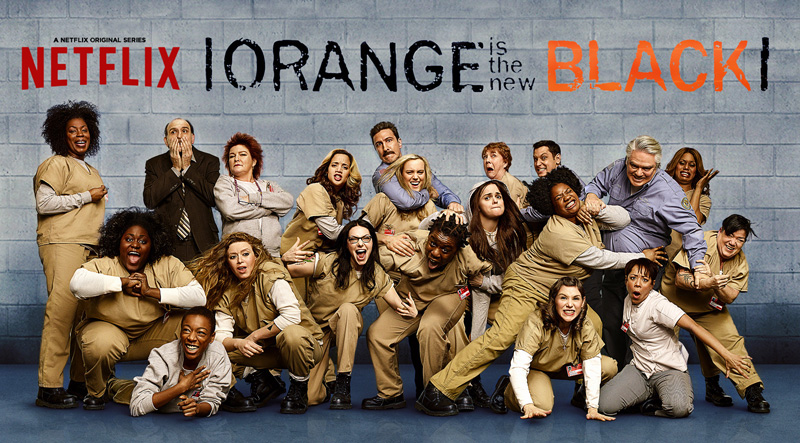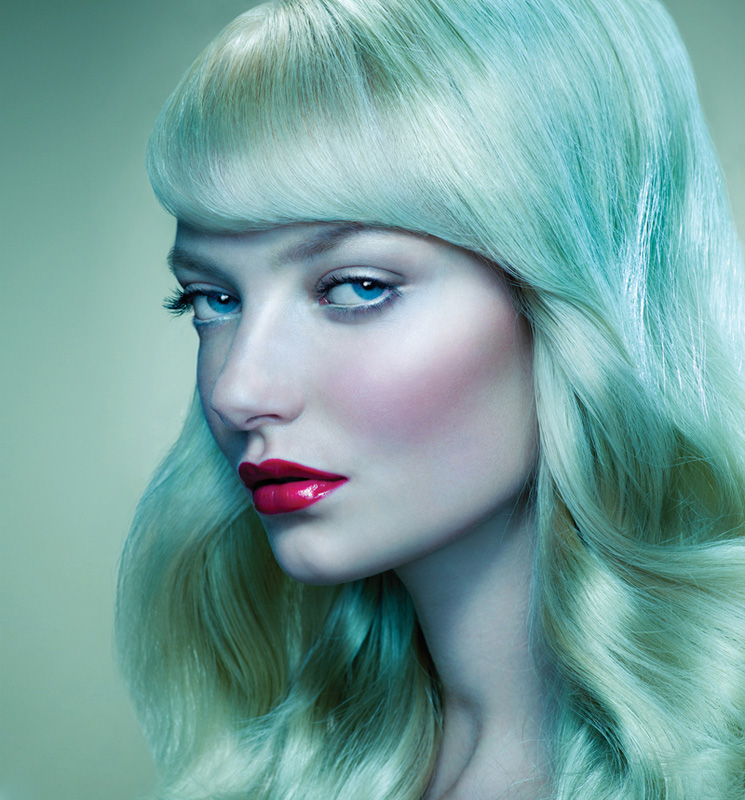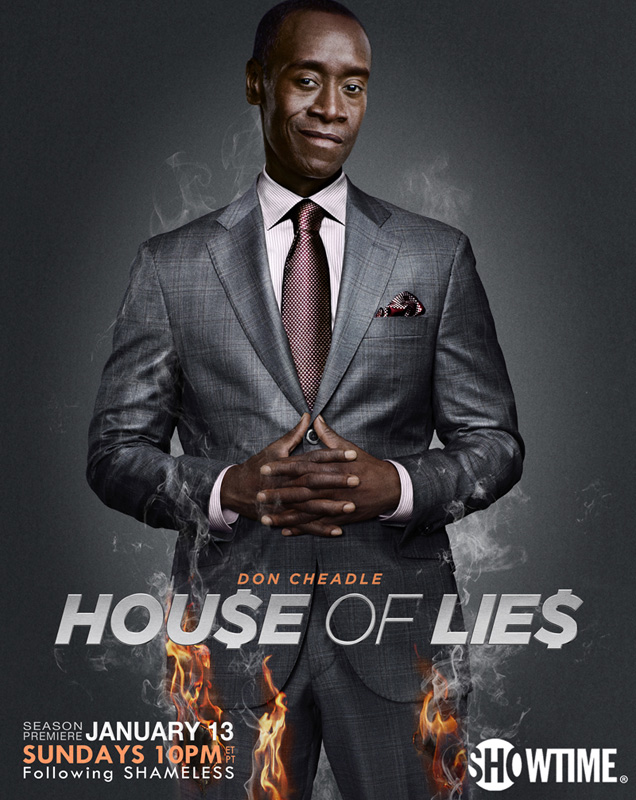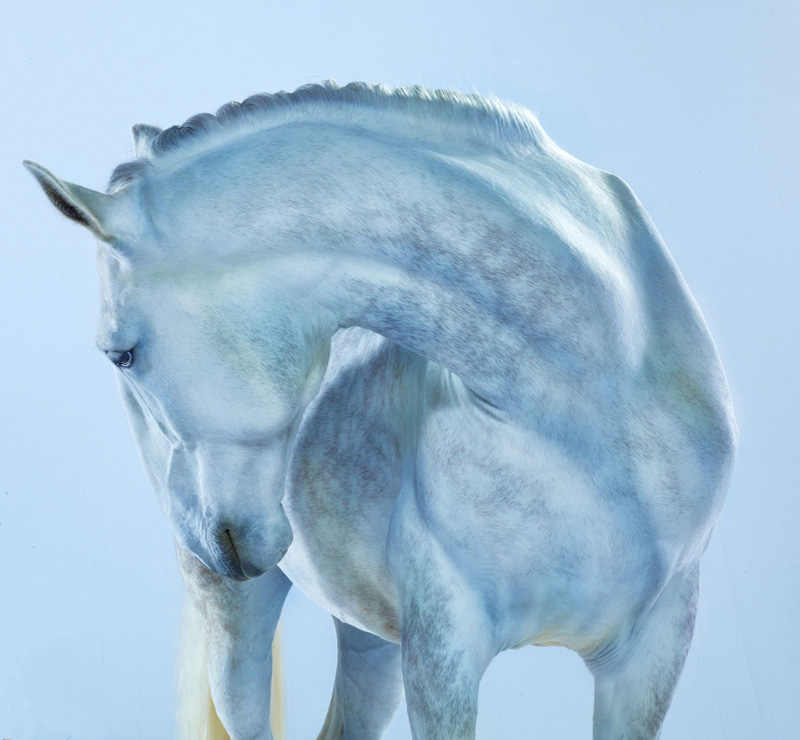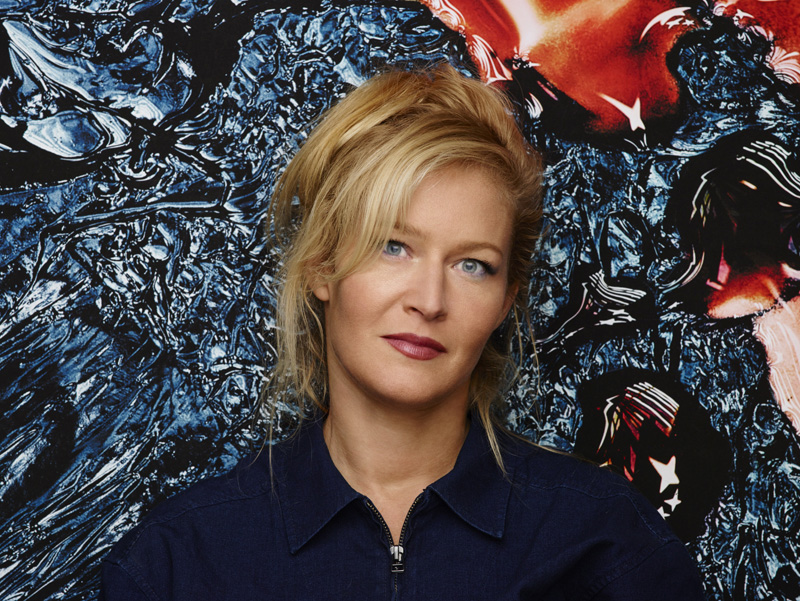Ken Weingart interviews Jill Greenberg
Today, I am sharing an interview that photographer and blogger, Ken Weingart conducted with photographer Jill Greenberg. Ken has been producing interviews for his Art and Photography blog, and he has kindly offered to share a few with the Lenscratch audience over the next few months.
Jill Greenberg is a commercial and fine art photographer who is famous worldwide for her daring and original portraits of people and animals. Her new series Paintings was recently exhibited as her 8th solo show at the Clampart Gallery in New York City. Photographing her own paintings using a heightened sense of light and color, this work is a “response to the appropriation tactics of certain Pictures Generation artists who mine photographic images from mass media, advertising, and the fine arts. These artworks, which have historically been understood to call into question Modernist conceits such as autonomy and originality, have now become so ensnared in the market, they have folded back upon themselves and raise ethical issues concerning fair use and, of course, copyright.”
Ken had a chance to ask Jill about her photographic beginnings and where her journey in photography is going.
How did you get started in photography?
I have been drawing, painting, and taking pictures since I was about eight or nine. I went to Cranbrook for elementary school, so I learned to print in the darkroom in 5th grade but was shooting even in 3rd and 4th grade.
My parents were photo hobbyists, and they let me use their cameras. I used to set up still lifes of my model horses, and later I staged portraits of my Westie named Plato. I used to draw him and horses obsessively as a little girl. In high school I wanted to be a fashion illustrator or a fashion photographer, and I went to RISD for a precollege illustration program but ended up being a photo major at RISD after spending a summer on a scholarship at Parsons in Paris studying photography.
I have always been quite driven and realized when I got to NYC in 1989 with no connections that I needed to focus. I did an internship at Pace/MacGill and applied to the Whitney program for independent study with recommendations from Peter Macgill, who was impressed with my senior thesis from 1989 – The Female Object. This thesis was a feminist screed on the internalized patriarchal gaze discussed in relation to the panopticon. It was a ten-minute slide show with a soundtrack by Chris & Cosey – of Throbbing Gristle with myself doing the voice over stream of consciousness tweaked to sound like a Melanie Griffith-esque ditz. So I almost got into the Whitney but didn’t make it since I kind of suck at verbal skills (my writing has always been better). That same week, I got a call to shoot for Sassy Magazine and decided that I should establish myself as a pro and make some money since I needed to support myself.
I did some digital art in the nineties but was mostly focused on trying to get assignments and, of course, it’s two totally different worlds. I have lots of friends from RISD who went fully into fine art, but I just didn’t want to be a starving artist. So yes, I totally pounded the pavement and spent nights and weekends in the darkroom printing C-print promos in the early nineties.
How productive was your time at the Rhode Island School of Design? What did you learn, and what knowledge has stayed with you?
RISD was not so much a technical foundation but more a place to learn critical thinking, how to deconstruct and construct images. I also took a great semiotics class with Mary Anne Doane at Brown, and since postmodernism was all the rage back then – it informed my work. This has been invaluable as a working image maker since of course images have become our de facto universal language.
I am quite good at creative direction and telling a story with an image. This makes it hard on occasion when asked to execute a brief which seems to make no sense visually. I am always happy to chip in creatively with my limitless ideas.
How did you break into magazines? Did you drop your book off a lot and have meetings? Are there still some magazines you would like to work with but never did?
I would still love to shoot for Vogue. I am still a huge fan of fashion, contrary as it may be to my feminist side. I like the idea of turning the tables and doing men’s beauty, and I have toyed with this subject many times but it’s a tough nut to crack as it always appears homoerotic. In fact, I made a calendar in 1988 called beautiful men with C prints. I still have it.
How did you develop your signature hi key/ multiple lighting technique? What equipment do you use to light, how and critical has it been to your success?
I have to take issue with the term signature. It’s such a sharp double-edged sword. Yesterday I was in a meeting and jokingly did not let the client refer to it as such. I have done so many approaches to making images in my life. It’s actually a huge pain in that the look I assume you are referring to, my Monkey lighting set up, became so identified with my name. I worked hard to not have this happen, but the controversy about the misunderstood process behind the End Times series made it a world-wide phenomenon.
Much to my dismay, I was called horrible names. It was early internet bullying, and people still believe the lies – it actually still hurts my business. Of course I did nothing personally except to direct the parents to gently try to get their toddlers to cry on cue. In some cases it was just due to the moms taking off the kid’s shirt. Honestly it is horrible that people think the worst of me. But I have little control over the crazies on the internet. There is even a conspiracy theorist that thinks my portraits are in some way proof that Sandy Hook was faked. It’s beyond insane.
Anyways, technique wise – back in the 80s, I was doing projections on people and painting on my prints. In 1990, I took a class at SVA and learned Photoshop 1.0. I was digitizing images and scanning body parts on my Flatbed scanner. I would make tiny jpegs and blow them up so that it was a mural-sized print of colored pixels with drawing collaged in. I used to be known for shooting reflections in mirrored Mylar, shot with colored gels, and I was doing the obligatory cross processing, and “forced perspective” look which required me to either lie on the ground or stand on a ladder.
About 1998 I reinvented my look with a Broncolor Satellite dish and rim lights. I did a series of editorial jobs where I had an amazing artist who I met through friends of mine who went to Yale – Ruben Verdu. He made futuristic architectural sets in miniature, and I would composite figures into them. Concurrently, I was still shooting poppy C-print portraits. I would drum scan the prints back then, but started drum scanning negs – about 1999. I moved my studio from NYC to LA in 2000.
In October 2001 that I came up with the Monkey lighting. I was shooting an ad campaign for Target, and there was a cat, dog, and monkey. I shot studio style film portraits of the monkey and just knew it was hilarious. I had been in touch with Henry Horenstein, who is a professor at RISD – though never of mine. He would bring his class down to NYC to show them my studio, and he was then showing at Paul Kopeikin. I asked him for an intro. Paul said he knew someone who would want a big monkey picture. He offered to put one up in the back of the gallery, and there was lots of interest.
I knew someone who knew a book agent and I got a monkey portraits book deal…..then I did End Times when my daughter was born then Ursine as a response to that backlash.
Which cameras and lenses have you used throughout your career and why?
I use whatever is right – usually the latest, and then experiment with pushing limits. When the Nikon D-800 came out, I started shooting at 4000 ISO, and it was a game changer. I’m not clear the 250 backs can go that high – I don’t think it works as well. I love new technology! I had a website in 1995. I was online in 1985 chatting with boys and meeting them too! Maybe the first online dater.
Your website used to be called The Manipulator. How important was Photoshop to your work, and is it still important?
Photoshop is a very powerful tool, but lately I do most work in Capture.
Do you feel that success in commercial art limits success in fine art? Is there a bias out there?
Yes.
You have created series of Monkeys, Ursine (Bears), and Horses. What is the fascination with mammals and animals? Are they preferable to photographing people?
I prefer people and would love to shoot beauty work.
Are you considering getting into film-making or teaching?
Both.
Posts on Lenscratch may not be reproduced without the permission of the Lenscratch staff and the photographer.
Recommended
-
Tara Sellios: Ask Now the BeastsApril 6th, 2024
-
ALEXIS MARTINO: The Collapsing Panorama April 4th, 2024
-
Emilio Rojas: On Gloria Anzaldúa’s Borderlands: The New MestizaMarch 30th, 2024
-
Artists of Türkiye: Eren SulamaciMarch 27th, 2024
-
Love and Loss in the Cosmos: Valeria Sestua In Conversation with Vicente IsaíasMarch 19th, 2024

